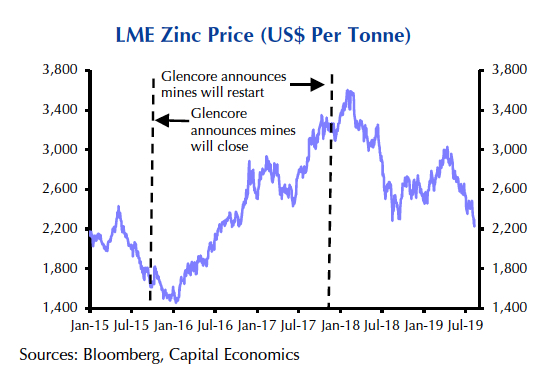The price of cobalt is up 18% over the last two weeks after Glencore announced it’s halting operations at its Mutanda copper-cobalt mine in the Congo at least until 2021.
Considering that Mutanda is the world’s largest cobalt mine and responsible for a fifth of global output in a market of just 135kt per year the response has been fairly muted. And at $31,500 a tonne, the commodity is still trading some two-thirds below near 10-year peaks hit March last year.
A new report by Capital Economics urges cobalt bulls to be patient pointing to Glencore’s similar action in 2015 to shore up the zinc market which lead to a doubling of the price in fewer than three years.
Ross Strachan, senior commodities economist, predicts a near doubling in the price by end-2021 from the level before the Mutanda care and maintenance news:
We think that this mine closure will eradicate the surplus in the cobalt market and we now forecast the market to be in a small deficit in 2020 and 2021.
Crucially this is underpinned by strong demand due to our expectation of rapid growth in electric vehicle production.
This will offset the increase in supply from the existing pipeline of projects, including Glencore’s Katanga, and a likely upturn in artisanal mining, which had slumped this year in conjunction with the price.
London-based Capital Economics predicts cobalt to reach $40,000 by the end of next year and add another $10,000 by end-2021.
The independent research company cautions however that the price is unlikely to return to its 2018 peaks as Glencore would return to the market before then.

